What is ePacket? a deep dive into everything ePacket and shipping
New brands tell us it’s tricky to know where to start a reliable supplier without paying over the odds. Existing brands often stick with what they know, even when they don’t have a good deal. Why? Because of the risk of those negative reviews if their new courier lets them down. But it doesn’t have to be that way. In this article, we’re taking a real deep dive into everything shipping, starting with ePacket. Further on, we’ll take a look at courier and postal options for UK suppliers. We’ll take a quick look at research about shipping options, and how to optimise packaging, to keep customers happy.
Everything ePacket
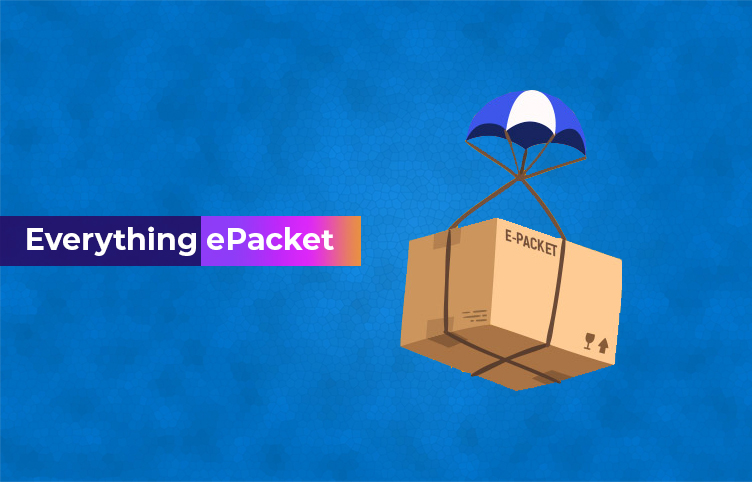
If you’re wondering what the heck is ePacket, you’re in the right place. If you already know about ePacket and whether it’s right for your business, feel free to skip ahead! We talk about other UK options, and how to make the most of your packaging further down the post. So, without further ado, let’s jump into ePacket!
What is ePacket delivery?
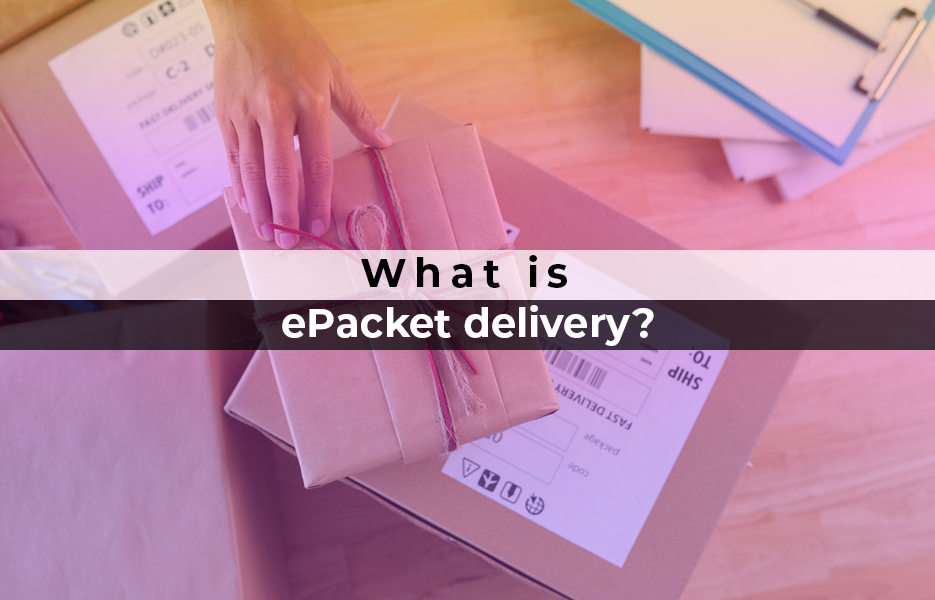
ePacket is simply a shipping option offered by sellers sending from China and Hong Kong. As eCommerce sales grew, it was only natural that Chinese businesses wanted to take their share. They were succeeding domestically, but not overseas due to the long delivery times involved. ePacket was developed to boost the number of online sales being dispatched to other countries.
In a nutshell though,ePacket is simply an agreement between Hong Kong’s postal service and the US postal service. It was developed in 2011, to make eCommerce deliveries to the rest of the world much faster and more affordable.
Why is ePacket required?
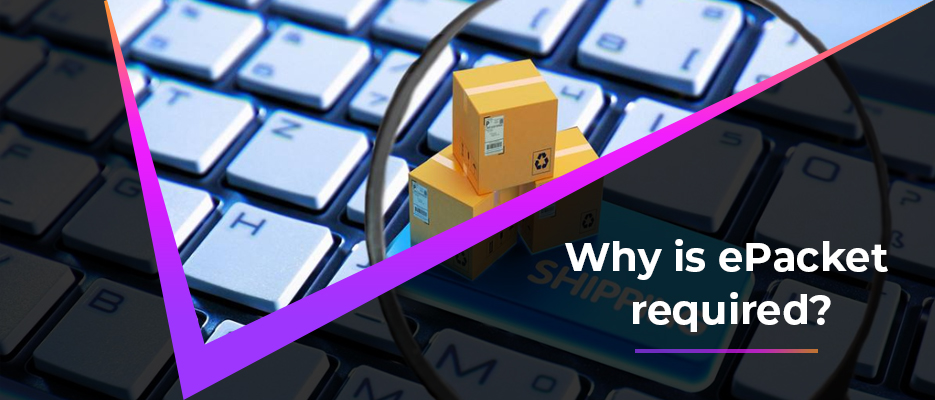
Before the ePacket service was created, it was incredibly expensive to ship from China, with additional costs often incurred at customs. Most parcels sent prior to ePacket were sent by China EMS, and would takemonths to be delivered. Alternatives to the China EMS were prohibitively expensive, with customers needing to pay to cover the cost of shipping. This meant it wasn’t worth customers ordering from China. No matter how inexpensive the item, adding the price of shipping nearly always meant that it was cheaper to buy elsewhere. As Chinese sellers wanted to make the most of selling to the rest of the world, so ePacket was negotiated.
If your business is incorporating DropShipping from China, and companies that are based there, you should understand why ePacket is important beyond speed of delivery.
ePacket delivery by numbers
2kg is the maximum weight of an ePacket
The value of an ePacket’s contents should be less than $400
Maximum ePacket length is 60cm
Maximum ePacket length, height and thickness is 90cm
The average length of time for an ePacket to be delivered is 10-20 business days
Which countries accept ePacket deliveries?
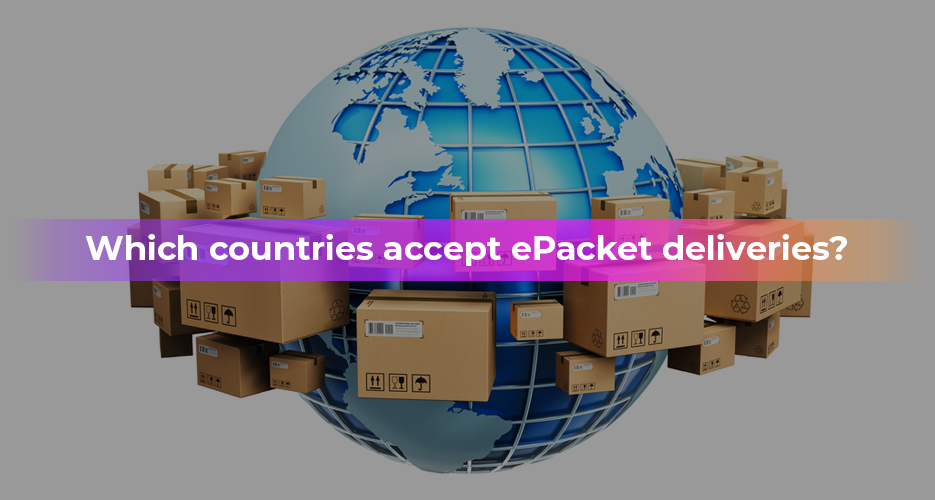
It can get a bit confusing about the countries that have ePacket shipping. That’s because the US postal service also has a service called ePacket, for parcels that originate in the US. We’re not quite sure why they picked the same name – but it’s one to be aware of. These are the countries that accept ePacket deliveries:
- Australia
- Austria
- Belgium
- Brazil
- Canada
- Croatia
- Denmark
- Estonia
- Finland
- France
- Germany
- Gibraltar
- Great Britian
- Greece
- Hong Kong
- Hungary
- Ireland
- Israel
- Italy
- Japan
- Latvia
- Lithuania
- Luxembourg
- Malaysia
- Malta
- Mexico
- Netherlands
- New Zealand
- Norway
- Poland
- Portugal
- Russia
- Saudi Arabia
- Singapore
- Spain
- South Korea
- Sweden
- Switzerland
- Thailand
- Turkey
- Ukraine
- United Kingdom
- United States
- Vietnam
There’s also a bit of confusion when it comes to countries that have overseas territories. Check these exceptions:
UK: ePackets can be delivered to mainland UK, the Channel Islands and the Isle of Man.
United States: ePackets can be delivered to all states, territories and military addresses within the US.
France: Packages can be shipped to mainland France with zip codes that start with 01 to 95. ePackets cannot currently be shipped to overseas French territories including Corsica, Guadeloupe, Martinique, French Guiana, Reunion, St. Pierre and Miquelon and Mayotte.
Additionally, Lithuania, Latvia, Estonia, Malta, and Gibraltar can receive USPS ePacket, but not China Post ePacket.
How do ePackets get delivered?
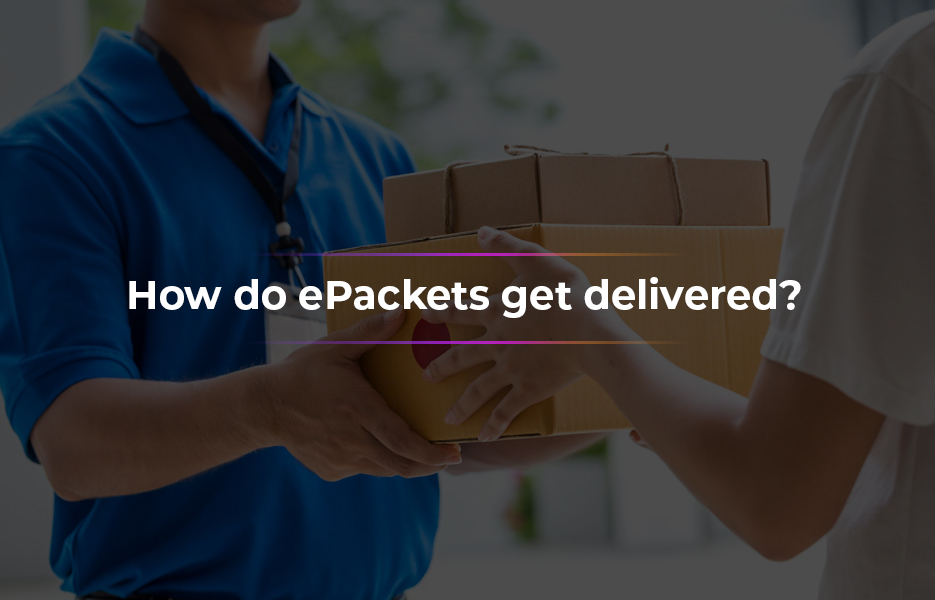
In the final leg of their journey, ePackets get delivered in much the same way to other parcels. Once they have cleared customs in the destination country, they enter that country’s postal service for final delivery to the customer, which means that customers might not realise – or even care – that they have received an ePacket. Most of the time, they’ll be more interested in the product they ordered, and simply discard the packing! Generally, customers are more interested in the time it takes to receive their order, and that additional charges are minimised.
Pros and cons of ePacket delivery
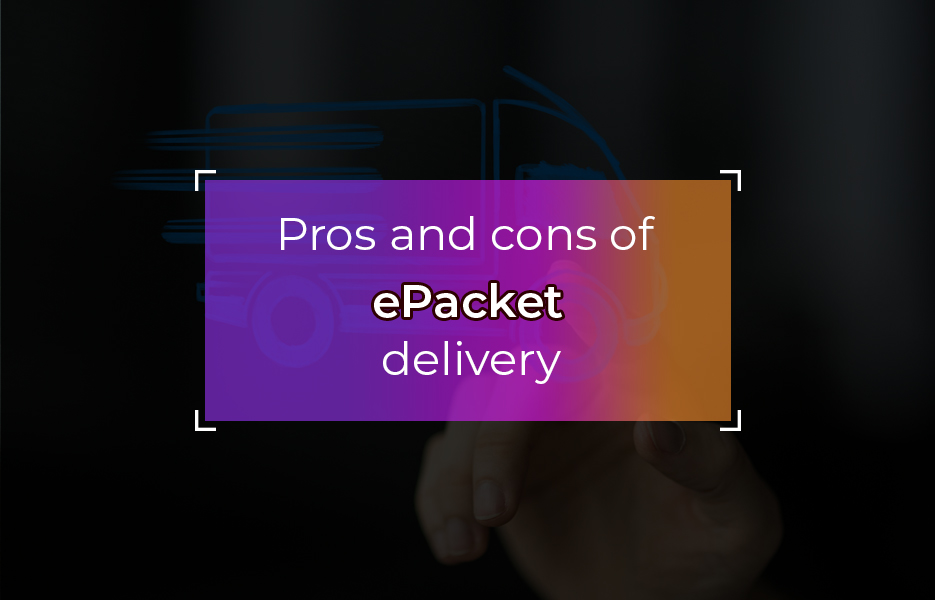
Like most services, there are advantages and disadvantages when it comes to using ePacketfor deliveries from China. Luckily, there’s more advantages than there are disadvantages! Let’s take a look:
Pros
Speed
For Chinese sellers sending to customers in China, the Chinese postal service is sufficient and they won’t use an ePacket. But other postal methods from China worldwide take months to get to the customer, and that’s why ePacket exists. Long delivery times don’t keep customers happy, especially when they don’t know where their parcel has got to.
ePackets are faster than other methods from China, but ePacketcan’t beat Amazon or eBay for next day delivery. But considering how far the packages have to travel and the customs requirements, that’s not surprising! With ePacket, parcels generally arrive with customers in around 10-20 days. Although that is quite a long time, it means customers who can wait are able to access lower prices.
Tracking & delivery updates
Although ePacket provides much faster delivery than traditional methods from China, it’s still slow compared with domestic suppliers. With customers waiting a longer time for their packages from China, it’s reassuring for them to know where their order is. That’s why ePacket has complete tracking functions, with no extra cost. If you’re using suppliers from China to DropShip orders to your customers, mention ePacket on your listing. By doing so, you’ll reassure your customers that they can check where their order is, whenever they want an update.
Price
ePacket pricing is not only faster, but it’s also significantly cheaper than other delivery options. Overseas shipping costs can be over $50 – meaning that it’s not worth customers placing an order. With ePacket, shipping costs are significantly lower, which means that sellers can pass price savings on to customers to further increase sales, and make sure their profits aren’t dented.
Customers cover customs charges
With ePacket, if there are customs, duties or taxes to be paid, they must be covered by the recipient. Not all items will incur fees, especially if they are lower priced goods. The good news for sellers is that there’s no additional costs to cover. There’s just one price, and when the package leaves them, it’s all done and dusted.
Free returns on undeliverable packages
Sellers and customers are reassured by the security of free returns for any items that can’t be delivered. This means that sellers receive goods back into stock, and can provide refunds where necessary. Nobody ends up out of pocket, and customers are free to order their product again if they wish.
Increased sales
Why do any retailers make any decisions in their business? Of course – the answer is that their decisions will add up to more sales. With ePacket, customers can access cheaper products, if they’re prepared to wait a while. Naturally, some customers will still go to Amazon for their next day requirements. But ePacket can increase sales, especially when customers understand that ePacket means it’s inexpensive, and they can track their delivery. To make the most of this, sellers should mention ePacket on the listings for items being sent this way.
Cons
It’s restrictive
There’s lots of restrictions on what can be sent via ePacket – there’s dimension requirements, as well as item restrictions. Items that cannot be sent via ePacket include:
- Items with batteries – mobile phones, radios, laptops, tablets
- Items with magnets – earphones, speakers, amplifiers
- Dangerous weapons – guns, bullets, knives, gunpowder
- Liquid items
- Chemical items – anything poisonous, inflammable, explosive and hazardous
- Items that break copyright laws – pirate CDs/DVDs, counterfeit clothing
- Illegal items – drugs, human organs, endangered species and parts
ePackets found to break these rules may be rejected or destroyed at customs, causing customer service headaches for the retailer when the ePacket doesn’t arrive with the customer. Forbidden items on the policy are changed regularly by the Chinese government, China Post and carrier airlines. As always, sellers should carry out their due diligence, and check regularly when using ePacket to ensure they’re not breaking rules.
ePacket doesn’t mean everywhere
We’ve already covered which countries accept ePackets, but there can be other problems too. Some sellers can’t, or choose not to send ePackets to certain countries. Even if ePacket is allowed to be sent to the country in question, sellers might opt not to allow it. Many sellers choose to restrict ePackets just to the USA. For sellers who work with Chinese suppliers, it’s especially important to check if you’re looking to create new partnerships.
The list of countries that accept ePackets is actually really short. With 195 countries in the world (as we write), that’s a lot of the world that can’t receive ePackets. Many countries not covered have smaller, but rapidly growing eCommerce markets that you might want to break into, which means it’s important to check before starting work on your setup. If you want to capitalise on those quickly growing markets, it’s important not to waste time.
How long does an ePacket delivery take to arrive?
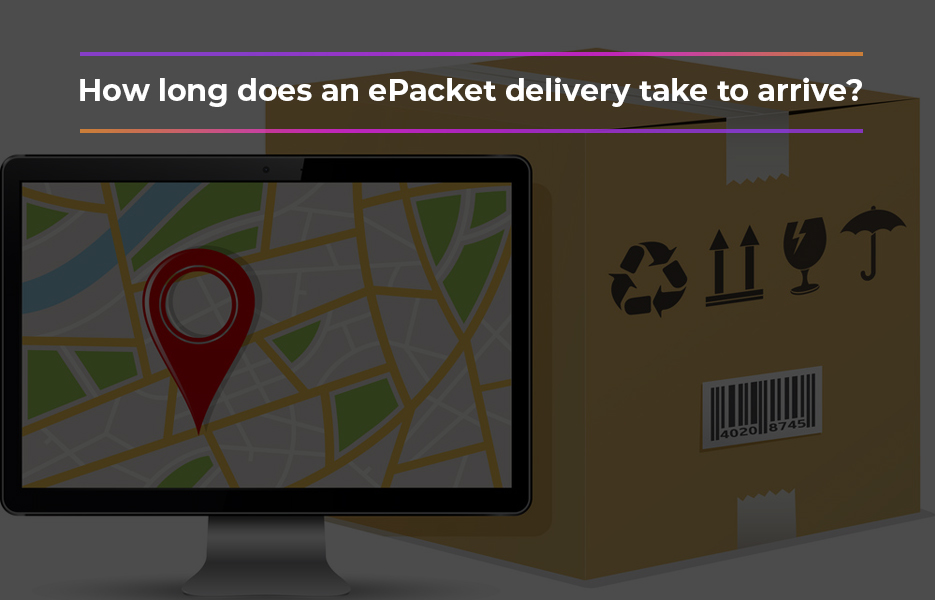
It really depends on a lot of different factors. When you consider the destination, time in customs, holidays and other potential delays, it’s tricky to say definitively. However, there’s more consistency compared with other shipping methods out of China and Hong Kong, so ePacket is definitely worth using. It’s important to manage customer expectations though, to avoid negative reviews.
ePackets – on average – take between 10-20 days to arrive from the date of shipment.
Can customers tell if their package is an ePacket?
They can if they know what to look for. But as we said earlier, customers are usually more interested in their order than the shipping method! All ePackets have tracking numbers – so if there isn’t a tracking number, then it’s probably not an ePacket. Most ePacket tracking numbers will have the letter L at the beginning of them. Customers using AliExpress can check the details in the Orders section, under the Logistics Information. This will define the method used to send.
What is eExpress?
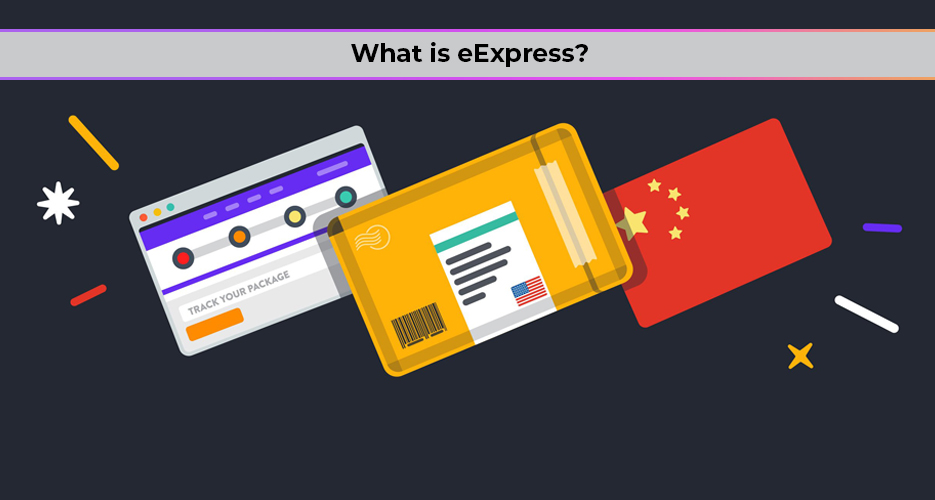
eExpress is kind of the same as ePacket, but not. It’s a similar agreement between China Post, Hong Kong Post and the USPostal Service. The difference with eExpress is that it caters for parcels that don’t fit the ePacket criteria and restrictions. Bigger and heavier goods can be sent via eExpress. The downside to eExpress is that there aren’t as many countries that accept eExpress parcels. There’s just 18 countries out of 195 worldwide! Remember, if you’re looking to use eExpress for internationally DropShipped orders, check your countries are covered first.
Countries accepting eExpress and average shipping times:
Taiwan, Hong Kong, Japan, Korea, Singapore: 2 to 4 business days United Kingdom, France, Spain, Netherlands, Canada, USA, Australia: 5 to 7 business days India, Brazil, Russia, Ukraine, Belarus: 7 to 10 business days South Africa: 10 to 15 business days
We expect this list will change and other countries will make agreements, but right now, it’s pretty restrictive. On top of this, it’s also complicated, with size and weight restrictions as follows:
Australia: Maximum weight of the package, including boxes and filler material, should not exceed 20 kg. Any side of the package should not be longer than 1.05 meters. Additionally, the sum of the length, width and height should not be greater than 3 meters (l + w + h <= 3m)
Taiwan: Maximum weight of the package, including boxes and filler material, should not exceed 30 kg. Any side of the package should not be longer than 1.05 meters. Additionally, the sum of the length, width and height should not be greater than 2.5 meters (l + w + h <= 2.5m).
United States: Maximum weight of the package, including boxes and filler material, should not exceed 31.5 kg. Any side of the package should not be longer than 1.5 meters. Additionally, the sum of the length, width and height should not be greater than 3 meters (l + w + h <= 3m)
India: Maximum weight of the package, including boxes and filler material, should not exceed 35 kg. Any side of the package should not be longer than 1.5 meters. Additionally, the sum of the length, width and height should not be greater than 3 meters (l + w + h <= 3m)
Other Countries: Maximum weight of the package, including boxes and filler material, should not exceed 20 kg. Any side of the package should not be longer than 1.5 meters. Additionally, the sum of the length, width and height should not be greater than 3 meters (l + w + h <= 3m)
Complicated, right? Like we mentioned with ePacket, it’s a good idea to check with suppliers in China before making agreements.
Avoiding complicated DropShipping from China
If you’re not DropShipping from China, you probably don’t need to be concerned with ePacket day-to-day. With all the complications when it comes to DropShipping from China, new sellers are often deterred from setting up business. We know this because we’ve spoken to so many of them while they are looking for DropShipping suppliers in the UK!
That’s just one of the things we considered when we were developing Avasam. Avasam has tens of thousands of items available from domestic suppliers, ready for you to sell in your business today. The items are already in warehouses in the UK, ready for dispatch – and in most cases, are sent at the same speed as Amazon Prime orders, so your customers receive them the next business day. There are no problems with communication, and there’s no time differences to delay resolution of any issues. Further, our automation means that you will know exactly what stage your customer orders are at, and if there are issues with returns and refund requests, you can escalate the issue to us, if necessary. Sounds a bit more comforting than trying to deal with language and time barriers, doesn’t it?
If you’re ready to start your business selling, head to our sign-up page. You can have your new business and start selling inside an hour! You won’t pay anything until you’re selling more than 10 orders a month, which means you really have nothing to lose.
It’s also important to note that there are other DropShipping providers worldwide – you don’t have to rely on China! Not only that, there are fulfilment locations worldwide that store goods for suppliers, so if you can find suppliers that are strategically located, you don’t need to worry about whether ePackets will be delivered. We’re working on adding more items from more suppliers worldwide to Avasam as we write so if you’re looking for DropShipping suppliers in Europe, keep your eye on our news.
If you’re a supplier who’d like more orders, what are you waiting for? We take care of everything for your setup. There’s no downtime, and Avasam links to your existing systems – so there’s nothing new to learn (unless you want to, of course!). It doesn’t matter where you are in the world either – although we’ve started with UK suppliers, we’re growing rapidly and expect sellers joining Avasam worldwide to sell your products daily. Get in touch to start a conversation – we’re ready to help you!
UK shipping – within the UK and overseas
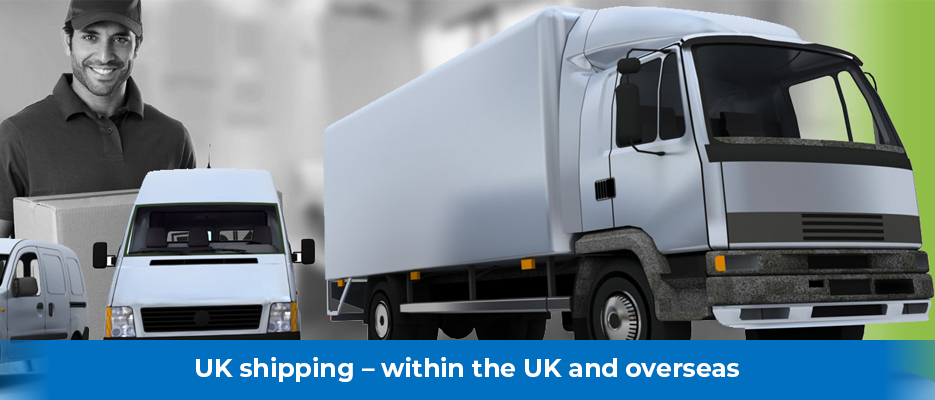
When you’re selling well, and your business keeps increasing at a manageable pace, you might be inclined to keep going! Make hay while the sun shines, as they say – and to a point, we understand and agree. However, eCommerce continues to evolve, and so should your business. You should be prepared though to review the effectiveness of all your setups at regular intervals. We’re not just talking shipping providers – think your PPC and Google Shopping campaigns, where you’re advertising – absolutely everything. You need to be sure that you’re getting the best return on your investments. This is especially true if you’re employing agencies or individuals to take care of different aspects of your business.
Like energy bills at home, shipping costs can creep up incrementally. At first, you might not notice, but for each tiny increase, your profits take a hit. You want those extra pennies for each parcel in your business account, not in a shipping provider’s. As that supermarket says… Every little helps!
If you’re considering joining Avasam as a supplier, or maybe you’re already with us? You’ll be pleased to know there’s plenty of options when it comes to shipping. We’re mentioning our most popular ones here – because they offer access to so many affordable options.
Don’t worry if you don’t see your current preferred carrier on the list. We have other major shipping providers connected– we just don’t have room here to talk about all of them! We’re working on setting up connections to loads of other shipping providers too. eCommerce doesn’t stand still, nor does your business – and neither do we!
We also think it’s important to mention that if you need to use a specialist carrier, we can provide a CSV setup, so even if your requirements are complicated, it’s no problem. The team have supported many, many businesses with many diverse setups, and are rarely fazed by a challenge!
Parcel Wise
Based in Manchester, Parcel Wise provide affordable, speedy and reliable parcel delivery. They have partnerships with top carriers, meaning whatever the delivery requirement, they have a way to make it happen. Their platform connects seamlessly with a huge number of shipping providers, including DPD, Hermes, Yodel, Whistl, Australia Post, PostNL, ParcelForce and Royal Mail, the United States Postal Service and many more. That means you get the best delivery options, at the most affordable prices. Not only do you get the best delivery options, but the ParcelWise platform also connects with BigCommerce, WooCommerce, Magento, Visualsoft, Shopify, eBay, Linnworks – and of course, Avasam. You won’t need to learn the ParcelWise platform if you’re an Avasam user though! All the functionality you need is built-in, so you get what you need without the fuss.
Partnering with, and connecting to so many other companies and services means that they can cover almost all delivery needs. Got oversized items, or need something delivered at express speed? Talk to them – they will almost certainly be able to provide a solution for your needs. Their team provide delivery within one-hour windows, which makes for the happiest customers and the most positive feedback. They receive great reviews from companies that have switched from other couriers – see if they can help your business too.
Route Genie from iForce

Route Genie from iForce is another great option that provides a lot more service than you might expect. Route Genie means that you can access over 100 shipping providers with multiple pricing options. If you’ve got oversized, or particularly fragile packages to send, Route Genie ensures you get the right service. They don’t just make sure you get the best carrier though. They also make sure you get a great price for your packages, so you get the best deal with no additional effort.
Route Genie from iForce is owned by the team of road legends Eddie Stobart. With the support of such a historic name, it’s no surprise that they get it right with deliveries. Getting a quote is fast and simple, and you can print labels and create and submit manifests within Avasam. This all adds up to bigger savings for you, with no hassle. And of course, we don’t charge you any extra to access Route Genie – it’s included in your Avasam subscription.
myHermes
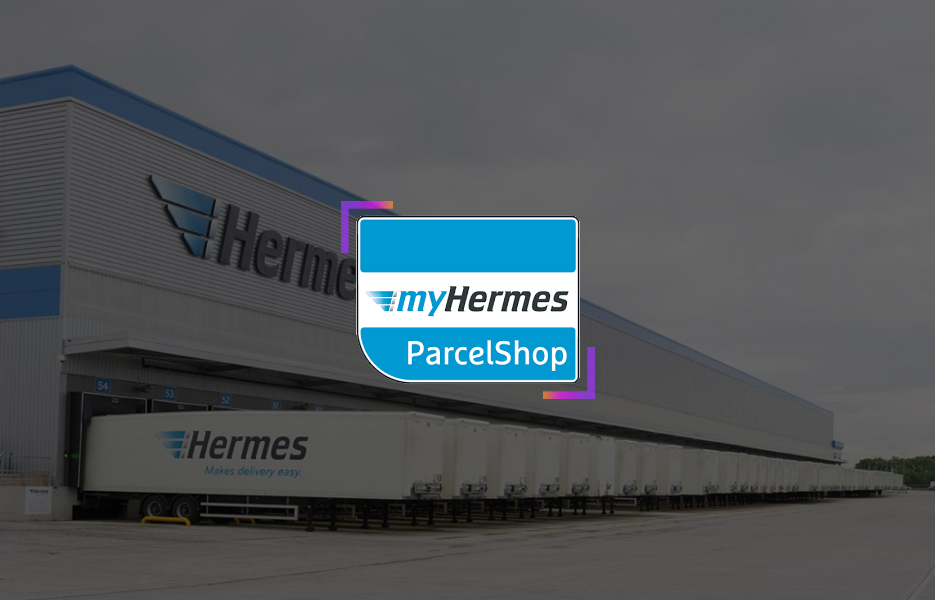
myHermes was launched in 2009. Their aim: to be a convenient, flexible and affordable consumer delivery solution. They’re now one of the most recognised online delivery solutions for parcel delivery. myHermes has a two-day service through more than4500 myHermesParcelShops nationally, and a three-day service on their doorstep collection. ParcelShops are loved by customers for the convenience they afford them – they have extended hours, making drop-offs easy.
As well as being known for their convenient service myHermes, get great reviews on Trustpilot. They’re leading the way with their integrations and additional services for customers too. They can now provide tracking with Alexa devices – so customers can check where their package is! But not only that, customers can provide, GPS verified and secured photo locations, and the tracking services that myHermes provides gives customers peace of mind.
Whistl
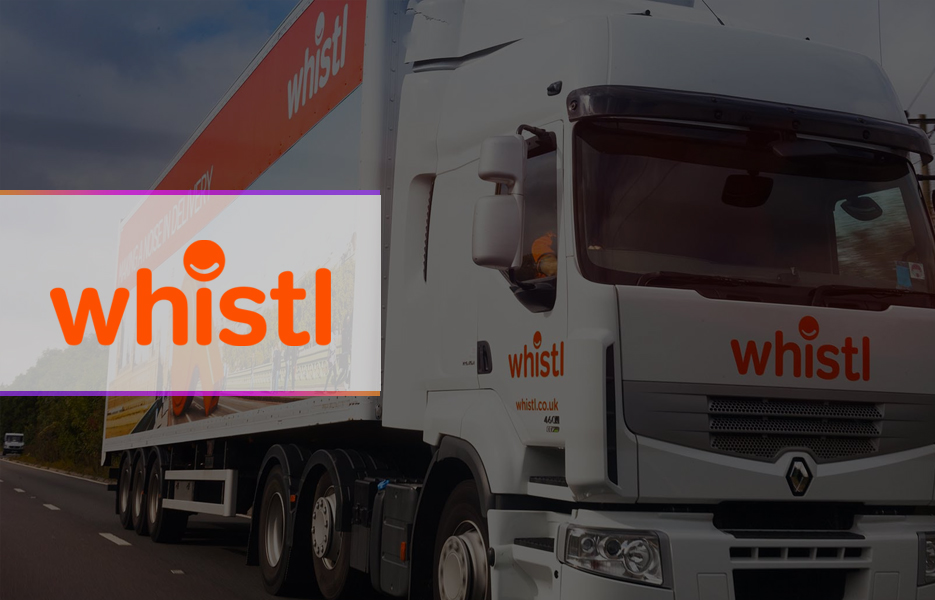
Whistl is the second largest UK postal service provider after Royal Mail, carrying over 4 billion items each year. Not surprisingly for a company carrying that many items, they get high levels of customer satisfaction – around 85%! As Whistl is already available as a shipping provider in Avasam, you can start using them immediately. There’s no additional charge from us to use Whistl – you just pay for your parcels.
We expect to see interesting developments from Whistl and additional services, since they acquired Parcelhub in the summer last year. That means even if you don’t see the service you want or need on their website, they may be able to help.
A note about Avasam shipping options
Don’t forget, with Avasam you’re not tied to using one shipping provider. You can use all of them, for parcels with different requirements if you want! Providing your customers with choice, and keeping shipping costs low is important to your success. We want to make everything as easy as possible for both Avasam sellers and suppliers, but every eCommerce business is different. Although we have a wealth of knowledge and experience, we encounter new challenges from different businesses every day. We pride ourselves on finding the right solution! If there’s something you think we’ve missed, or you have a question, get in touch.
Customers and shipping in the UK
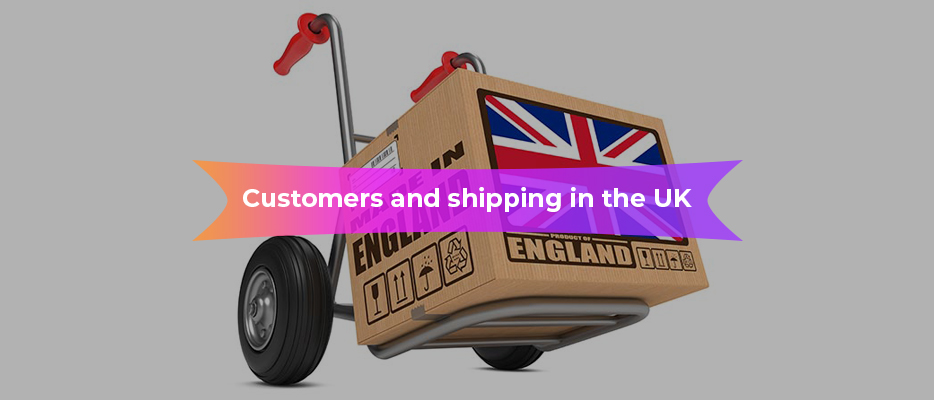
When considering their shipping arrangements, online businesses should take advantage of the research available. As Amazon continues to dominate, with next day delivery and minute-by-minute tracking, so customer expectations continue to rise. Without keeping up with shipping requirements, smaller companies may end up falling behind in their sales.
High expectations but low loyalty
Unfortunately, gone are the days where customers would be loyal to one brand. The internet has made it easier than ever to find lower prices for everything, including shipping. It’s estimated that 90% of new eCommerce businesses fail within their first year. Unfortunately, it’s reasonable to assume that shipping costs are a large part of that. Businesses need to provide not just low prices for their products, but also fast, or free shipping – or both. By being able to fulfil those requirements, businesses are more likely to see happier customers, better feedback and longer-term success.
UK postal statistics
UK courier and express delivery sales increased by 12% in 2018, reaching a phenomenal £12.6 billion
Volume sale increased by 14% in 2018
3.65 billion packages were sent in 2018, up from 3.2 billion in 2017
Volumes are expected to rise by 54% by 2023
81% of British customers used couriers in the six months to February 2019
37% of customers also returned a parcel in the six months to February 2019
Source: Mintel
Convenience is critical
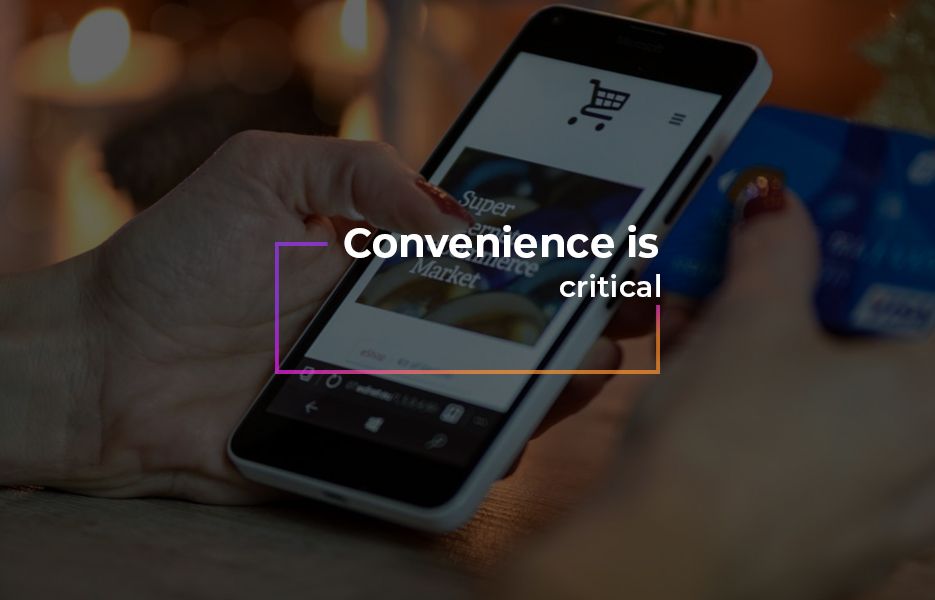
Why do people shop online? It’s a question we can almost all answer with the same reason – it’s convenient. Can’t get to the shops because you’re looking after children all day, or at work until the shops shut? Shop online in the evening, and have your order delivered in the next couple of days. What about if you can’t find what you’re looking for in your local town, or don’t have time to spend in the shops? We bet you can choose from several options online!
Not only do customers demand choice and convenience when ordering, they’re also looking for convenient delivery options. 83% of consumers wanted guaranteed delivery dates as early as 2015, and that’s much higher today. It’s not just about being able to feel control over delivery though. It’s knowing the order will be there when it is needed, rather than taking a chance.
Customers are also concerned about issues such as theft if packages are left in ‘safe places’,or with neighbours. That’s why Amazon Lockers, and other click-and-collect services are growing in popularity. Customers know their order is secure, and that they can collect their parcel at a time that is convenient to them – and there are no risks that someone will accidentally open it, which is ideal for surprise birthday gifts, or orders that require a bit more discretion. Many Amazon lockers are in convenience stores, that are open 7-11, and lockers and click-and-collect services can also provide faster and more efficient delivery too, with less stops required by the courier.
Free shipping is at the forefront
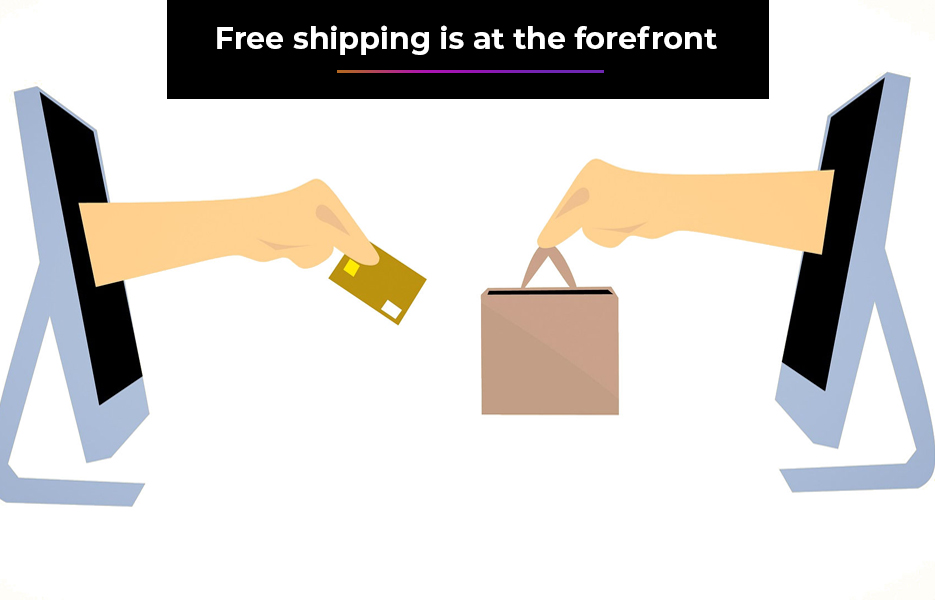
With Amazon Prime raising the bar, customers now look for free shipping elsewhere too. Whatever you sell, if you can offer free shipping as standard, you’re likely to make more sales. That said, it’s important to note that customers like choice. If you can’t make next-day shipping free, make a range of shipping options available. Every customer is different, and so is the reason they want the item. If they’re ordering a Christmas present in October, they might be happy to wait 5 days for free shipping. If it’s a last-minute birthday present for tomorrow, they might be happy to pay £5.99 for next day shipping.
While free shipping for their delivery is important, free returns are important to consumers too. 43% of customers said that it was the next most important consideration when they were making an online purchase. This makes sense, especially when considering fashion as an example. Many customers will order several items with the intention of only keeping one or two. This is to be expected, especially when sizing doesn’t follow exact standards. With that in mind, make sure your returns policy doesn’t deter customers from ordering from you.
Be transparent with shipping costs
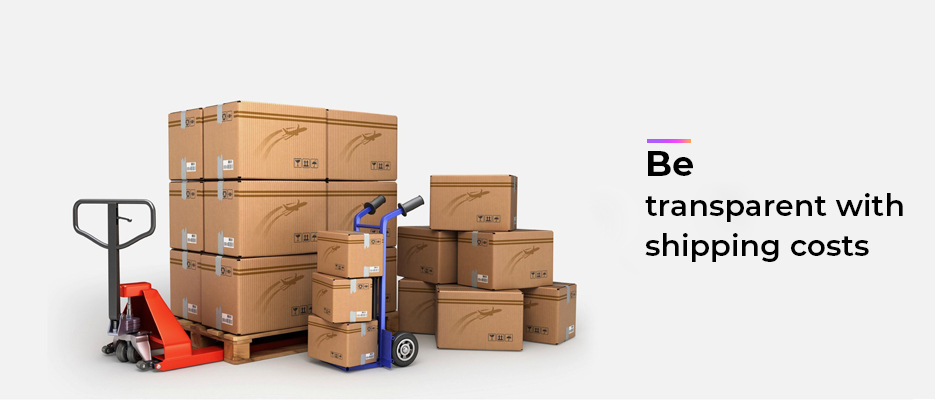
When customers place goods in their online basket, it’s usually because they’ve found a great deal. That’s ruined when they then find that the price increases significantly when they check out, because of shipping costs. Quite often, once that has happened, they’ll be annoyed, so abandon their cart and head elsewhere – often Amazon! To avoid those abandoned carts, display shipping costs on your listing pages.
Changing delivery addresses happens all the time
We admit it – we’ve done it too! Customers often make their purchases quickly, and then realise it would be much more convenient to have it delivered elsewhere. It might be their office, or direct to the person they’ve bought it for. Over 29% of people say they’ve changed the delivery date or location after placing their order. Sellers and couriers need to make sure they’re prepared for these situations, to keep customers happy and encourage repeat custom.
Packaging

When thinking about how to impress your customers to increase sales, packaging might be the last thing you think about. But think about it: receiving your package is the only physical contact customers have with you. Yes, they’ll receive emails and updates from you, but your packaging reflects the quality of your service. There is plenty of evidence to show that premium packaging makes customers feel like they’re getting a more luxurious experience. And with a more luxurious unboxing experience, they’re more likely to buy from you again.
Great packaging and unboxing doesn’t have to cost loads, or mimic another brand’s experience. But there’s plenty of ways to make it feel more luxurious than Jiffy envelopes! Let’s take a look:
The outer layer
Brown corrugated cardboard is the Amazon way – and for good reason. It’s inexpensive, and is sustainable. If it’s done right, it can look chic too – you don’t have to sacrifice glamour just because it’s brown! Branded packing tape or stickers on the outside of the box can help minimise printing costs, while reinforcing your brand.
Obviously, there are some products that require plastic outers. It’s important to make sure you’re choosing recyclable where possible. Sustainable packaging will continue to be a major trend, and will eventually become the norm, so talk to your suppliers. If you’re using recycled plastic, consider printing your logo on your bags. There are plenty of companies who can both design and print your packaging. Striking packaging helps customers remember your brand, after all!
Although we’re talking about branding the outer layer of your packaging, sellers need to think about their target customer. Brands selling personal items such as feminine items or adult toys might opt for plain packaging. Being embarrassed to receive their parcel is not going to encourage repeat custom, after all!
Inside the box
There’s quite a lot to think about when it comes to what’s inside the package. You might think the product is all that is necessary – and in many cases, that might be true. But if you’re building a strong brand, there are other things you can do to enhance the unboxing experience.
Who doesn’t love the feeling of opening a present? Even if you know what’s in the box, there’s always that moment of delicious anticipation as you tear the seal. Capitalise on that moment! Adding a sheet or two of printed, or coloured tissue paper with a sticker costs hardly anything, but helps the order to feel much more high-end.
If you’re adding notes to your parcels, make them worthwhile. The best ones are relevant to the target customer, and add value – they don’t just show other products! Consider a note about your sustainable or ethical work, and encourage them to tag you in their social media posts. Maybe by tagging you in a social media post they receive a discount on their next order? There’s plenty of options here.
Adding packing slips? Make sure your slips have as much marketing on them as possible. Add your logos, product images and discount codes. Don’t forget your social media handles, and invitation to tag you in their posts!
Free gifts might not be realistic to maintain margins on all your orders, but they can be worth thinking about. If you have customers who place large orders, or who order from you regularly, consider rewarding them with a gift. Even if it’s just a free sample size of something, it’s another reason for them to keep you in mind, or recommend you to others.
Environmental considerations
In the plastic-free revolution, you need to think about the sustainability of your packaging. Customers want ethical brands, as well as affordable items. Customers are looking for sustainable, plastic-free options, and that goes right down to packing materials. Gone are the days of oversized boxes filled with packing peanuts and bubble wrap! Social media and review websites are full of feedback about wasteful packaging. It’s easy to avoid your reputation being damaged by such reviews. Recyclable packing is perfectly on-trend, and even better if it is recycled already. Here are a few ideas to keep in mind when you’re choosing your packing materials:
- Choose recycled cardboard
- Avoid plastic wherever possible
- If plastic is unavoidable, source recycled and recyclable
- Avoid printed cardboard – consider branded paper packing tape like Amazon have, to avoid waste (and lower costs)
- Choose crinkle paper or wood wool (excelsior) as sustainable cushioning
- Recycled brown paper can pad boxes for less fragile items
- Minimise the size of your packing slip – print double-sided wherever possible
- Choose recycled paper for your packing slips or other marketing materials
- Reduce the number of pamphlets in your box – these often get thrown away anyway
A bonus of choosing environmentally sustainable packaging is that it can help enhance your marketing. It’s a topic you can talk about on your social media. You can have a whole page about it on your website, blog about it – just shout about it. Customers want to know!
Speculating to accumulate
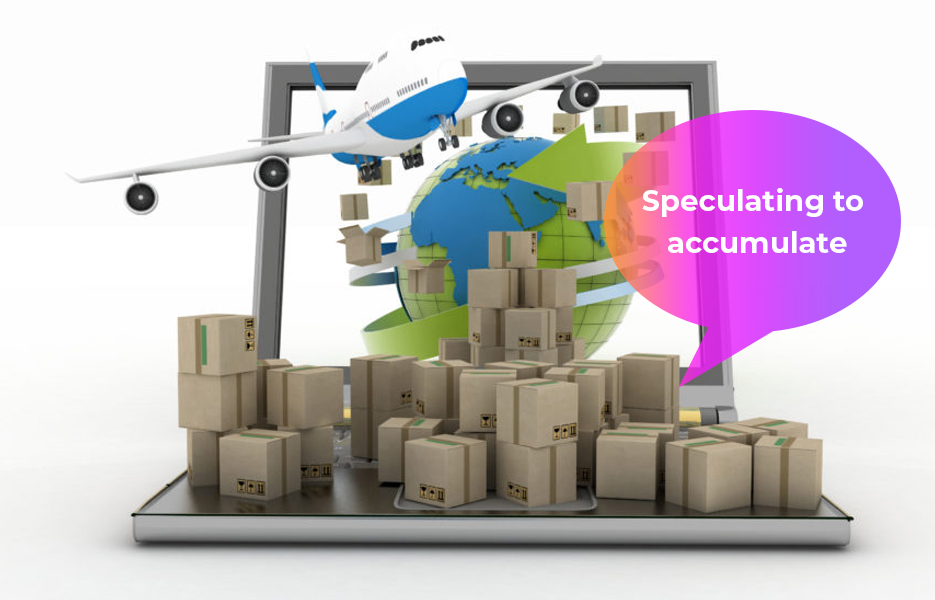
We know – your margins are thin and you want to minimise costs wherever possible. You also don’t want to spend loads of time implementing these ideas! We’re not saying you should do all these things, all at once. Not all these ideas are relevant, and they might not be right for your business. You’ll need to make the decisions as to what is right.
However, even using one or two of these strategies can have a positive impact! A fraction of a penny on a bit of tissue paper and a branded sticker can lead to extra custom. It might prompt customers to post about their order on social media, or recommend you to friends. They might post a great review of your product, or they might start following your social media channels.
The effort might seem to outweigh the return, but think of it this way. If just 10 customers with 100 followers each post on Instagram, tagging you – that’s 1000 people seeing your brand name, and generally there will be far more than this tiny example. More views will lead to more follows, and more sales – all because you made a tiny tweak to your packaging.
Unboxing as a marketing strategy

Unboxing videos are enormously popular online. They’re pretty much exactly what they sound like – a video of a product being removed from the packaging.
Content creators can be influencers or just recording the video as a memory. It’s hard to know which brand was first, although it’s claimed it was for the Nokia E61 mobile phone, back in 2006. From there, high end computers and fashion items became popular to unbox. After that, Deb Amien from Yahoo said at the time, unboxing videos were made about “nearly everything that is available for purchase.” By 2014, businesses were using unboxing videos as part of their marketing strategy – both self-made and made by influencers.
They’re about sharing the experience – it’s about the outer layer and inner packing material as much as the product. Of course, a huge part of the content is also appreciating the product, especially for coveted items such as Chanel handbags or a new Macbook.
Lesser-known brands with lower-value items benefit from unboxing videos too. By showing exactly what is in the box, customers can be sure they’re choosing the right product. Videos and blog posts made by influencers – even those with a small following – can be a great marketing tool. They provide honest content, and may make comments that you, or your marketing team might not have thought about. You can use that feedback to improve your products, and your customers have faith in the influencer.
If you’re engaging with influencers to talk about your products, you’ll want to consider what you want to achieve from it. Providing guidelines is fine, but keep them relatively loose. If their content sounds like a script you wrote, new customers won’t trust it. It’s perfectly OK to request to approve the content before it’s published though. But remember, some negative comments are to be expected – and any negative comments, especially if they are valid concerns – will help with the trustworthiness of the content.
If you’ve found an influencer that creates great content, and has huge numbers of followers and likes, expect to pay. Successful influencers can charge thousands for a post! When you consider the amount of exposure you’ll be getting though, it can be worth paying that, as long as it is an affordable part of your strategy. If your business is young, and your marketing budget is minimal, you can still work with influencers. Just look for ones that have fewer followers, and who are in the niche that your products belong. If the product you want them to review is great, they might be prepared to create the post in exchange for the product. If your influencer doesn’t want or need the product, they may still agree to create the post, but they might require payment.
It is customary for influencers to disclose whether they were paid, or received the item in return for their review. This is usually at the top or the bottom of the post, and usually states how compensation was made.
Although you might end up working with influencers to create your unboxing content, if your products and packaging are worth talking about, content will get created. Even if they’re not, content is likely to be created anyway – search for ‘Amazon unboxing’ and you’ll see what we mean. Influencers, bloggers and YouTubers all need content for their channels – and unboxing is just one method.
Shipping can be complicated. Sellers need to figure out the right shipping options for their business, and understand overseas delivery methods. Even if they’re a domestic-only business right now, with the growth of eCommerce sales worldwide it’s important to be prepared. Predicting when something will begin trending is an art, rather than an exact science. Being prepared allows sellers to make the most of opportunities quickly, when they present themselves. No seller wants to have to cancel orders because they couldn’t find the right shipper!
As well as thinking about your shipping providers, sellers and suppliers should look at their packaging and how it can be used for marketing. Those few moments adding a sticker that costs a fraction of a penny to a box could lead to untold numbers of views if it leads to an unboxing video – so make the most of it!

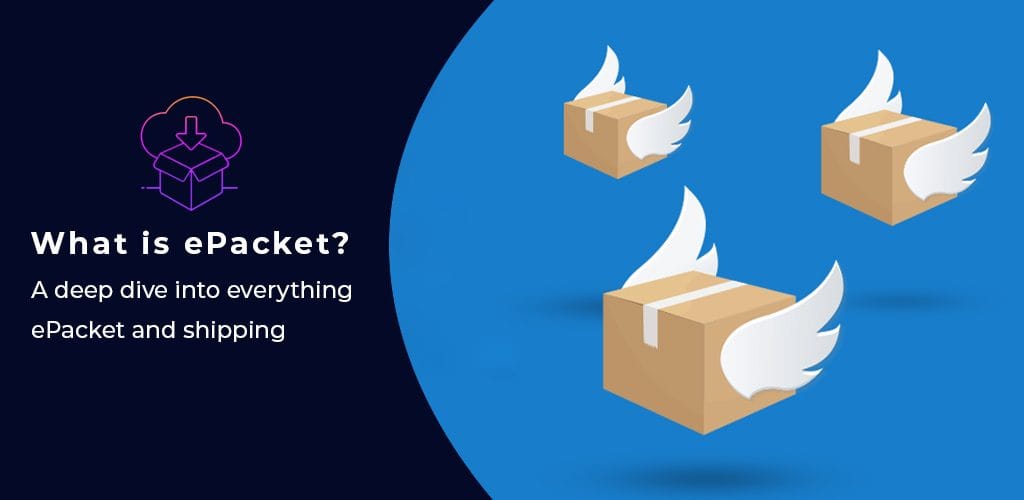






DropShip products from verified suppliers to diversify your inventory and scale your eCommerce business